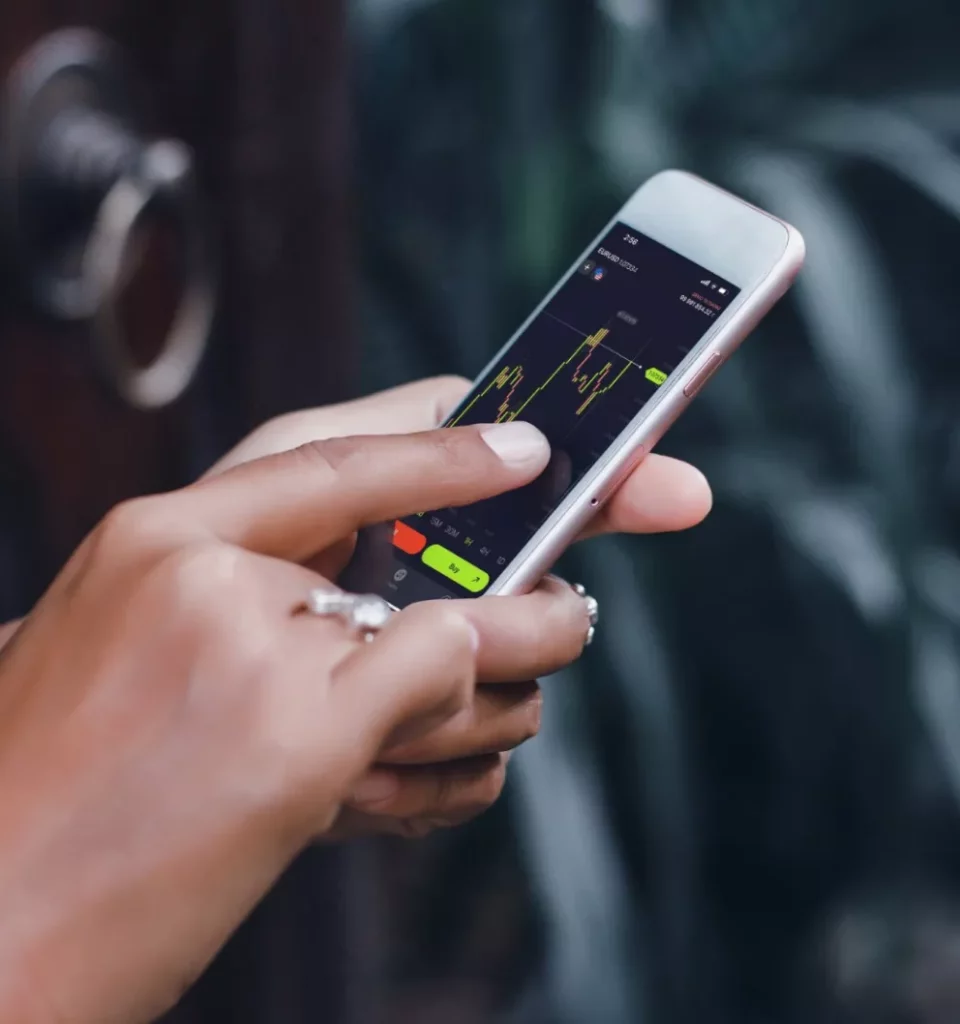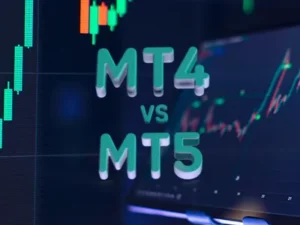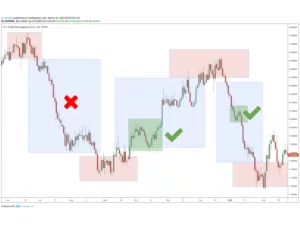Virtual trading platforms give Indian traders a safe way to learn market behavior and test strategies without using real money. These platforms simulate live trading conditions using real-time market data, allowing beginners to practice order placement, risk control, and strategy development. You can test how trades perform during volatility, learn to set stop-loss and take-profit levels, and understand how emotions affect decision-making — all without financial pressure. Many Indian brokers, such as Zerodha, Upstox, and Neostox, provide demo or paper trading features for stocks, forex, and commodities.
What Is Virtual Trading
Virtual trading, also known as demo trading or paper trading, is one of the best ways for beginners to learn how financial markets work without risking real money. It provides a safe environment to test strategies, understand price movements, and build confidence before switching to live trading. Most brokers and exchanges offer virtual accounts with real-time market data, allowing traders to simulate real conditions and gain hands-on experience.
Virtual trading means trading on a demo platform using simulated money. It mirrors live market movements, spreads, and volatility but without any financial risk. The account balance is virtual, meaning any profits or losses are not real. This feature helps new traders familiarize themselves with the platform interface, order types, and trade execution before using real funds.
Virtual trading helps traders learn the technical and emotional sides of trading in a realistic yet risk-free setting. It allows you to test new strategies, practice chart reading, and understand how orders behave in different market conditions. It’s also useful for learning how to manage emotions like greed or fear — which are common challenges in live markets. Practicing on a demo account gives traders time to correct mistakes early and avoid costly errors later.
Benefits of Practicing on Virtual Platforms
Using a demo account is not just for beginners — even experienced traders use it to test new strategies or indicators. The main advantage is the ability to learn, adapt, and analyze performance without any financial consequences.
Main Advantages
- No real money loss – Mistakes don’t affect your finances, so you can experiment freely.
- Real market conditions – Price changes, spreads, and volatility reflect real-time market data.
- Practice order types – Learn how to place market, limit, and stop-loss orders effectively.
- Learn risk control and discipline – Build habits like using stop-losses and position sizing before going live.
- Understand platform functions – Get used to charting tools, indicators, and execution buttons.
Practicing regularly on a virtual account helps traders understand how to apply technical analysis and money management rules consistently. It builds confidence and improves reaction time when transitioning to real trading.
Real Trading Experience
Although no real money is involved, demo accounts offer realistic trading conditions that closely resemble live markets. Traders still experience price fluctuations, spread widening, and execution delays, which prepare them for actual market behavior. Virtual trading also lets you review trade history, identify patterns, and refine your strategies through backtesting. The key is to treat demo trading seriously — as if it were real money — to develop discipline, patience, and consistency.
Best Virtual Trading Platforms in India
Virtual trading platforms in India give traders the perfect opportunity to learn without financial risk. These tools help users practice in real market conditions, test strategies, and understand the mechanics of different asset classes like stocks, forex, and commodities. Whether you’re a beginner or an experienced trader testing new methods, using these demo platforms can significantly improve your skills and confidence before moving to live markets.
Zerodha Varsity
Zerodha Varsity is an educational initiative by Zerodha, designed for both beginners and intermediate traders. It offers a combination of tutorials, market lessons, and simulated trading features. The app’s Varsity by Zerodha section provides structured learning modules covering topics such as technical analysis, risk management, and order execution. It’s a great starting point for new traders who want to understand how Indian stock markets function before trading live.
Upstox Pro
Upstox Pro provides a demo trading account that replicates live market conditions. It allows users to practice trading in stocks, futures, and commodities using virtual funds. The platform’s fast execution speed, real-time data, and clean interface make it ideal for beginners who want hands-on experience. Traders can also access detailed analytics to measure their performance and identify strengths or weak points before investing real capital.
MetaTrader 4/5
MetaTrader 4 (MT4) and MetaTrader 5 (MT5) are globally recognized trading platforms used by forex and CFD traders. They offer free demo accounts with real-time price feeds, multiple timeframes, and technical indicators. MT4/5 allows users to test strategies, backtest data, and even automate trades using Expert Advisors (EAs). These platforms are perfect for traders who want to understand international markets and develop algorithmic or strategy-based trading skills.
TradingView Paper Trading
TradingView is widely used for charting and technical analysis. Its paper trading feature allows traders to simulate buy and sell orders directly on live charts using virtual balances. It’s especially popular among traders focusing on technical setups, trend analysis, and indicator testing. TradingView also includes community features where traders can share ideas, discuss charts, and learn from one another — making it both educational and interactive.
How to Start Virtual Trading in India
Getting started with virtual trading in India is easy and requires no real investment. It’s the safest way to learn the basics of order placement, price action, and trading psychology before entering the live market.

Step-by-Step Process
- Choose a regulated broker or app that offers demo or paper trading accounts.
- Sign up with basic details (usually no KYC required for demo mode).
- Receive virtual funds, usually ₹1,00,000 or more, depending on the platform.
- Explore charts and market data to analyze instruments and price trends.
- Start placing trades — buy, sell, or set stop-loss and take-profit orders just like in real trading.
- Track performance and note outcomes to identify what works best.
Treat your virtual account like a real one. Maintain a trading journal where you record every trade, reason for entry and exit, and emotional reactions. Reviewing these records helps develop discipline and improves long-term consistency. The goal of demo trading is not just to win trades but to build the habits that make success sustainable when you switch to real money trading.
Learning Strategy and Risk Management
Virtual trading is not just about practicing entries and exits — it’s about building the mindset and risk discipline needed for long-term profitability. Developing the right strategy and risk control approach during practice ensures smoother performance when you trade live funds.
Even the best trading strategy can fail without proper risk management. Learning how to control losses, limit exposure, and protect profits is crucial. Practicing on a demo account gives traders a safe environment to test how different levels of risk affect results, helping them refine their approach before facing real financial pressure.
- Setting stop-loss and take-profit levels – Always define risk and target before entering any trade.
- Using 1–2% risk per trade – Keep each loss manageable to protect your total capital.
- Avoiding overtrading – Take only high-quality setups that fit your plan.
- Tracking risk-to-reward ratios – Ensure each trade offers a reward that’s at least twice the potential loss.
- Analyzing losing trades – Study what went wrong and adjust strategies accordingly.
By consistently practicing these principles on virtual accounts, traders build confidence, discipline, and realistic expectations. Once these habits are mastered, transitioning to real trading becomes smoother, less emotional, and far more effective.
Comparing Virtual vs. Real Trading
Understanding the difference between virtual and real trading is essential before risking actual money. While both involve market analysis, order placement, and strategy testing, the emotions and stakes are entirely different. Virtual trading helps traders learn without pressure, while real trading introduces financial and psychological challenges that test discipline and consistency.
Key Differences
| Feature | Virtual Trading | Real Trading |
|---|---|---|
| Capital | Virtual Money | Real Funds |
| Emotion | Low | High |
| Risk | None | Real Loss / Possible Profit |
| Learning | Theoretical Practice | Practical Application |
| Decision Impact | No financial consequence | Direct effect on account balance |
| Market Reaction | Simulated | Real-time execution & slippage |
Virtual trading provides a safe foundation to practice strategies and understand how the market moves, but real trading exposes traders to emotional factors like fear, greed, and impatience. These differences are why even skilled demo traders sometimes struggle when they go live — emotional control becomes a key part of success. Virtual trading is best for building knowledge and testing strategies. Once you achieve consistent profits and disciplined habits on demo accounts, gradually shift to live trading with small capital. Treat real trading as an extension of your demo practice — focus on risk control and patience rather than quick profits. Over time, the habits developed during virtual trading become the foundation for long-term success in real markets.
How to Transition to Real Trading
Moving from virtual to real trading should be done carefully and strategically. A gradual transition helps minimize risk and allows traders to adapt to the emotional and financial realities of live markets.
Once consistent profits are seen on your virtual account for at least two months, begin live trading with the minimum possible capital. For example, if you practiced with ₹1,00,000 virtual funds, start with ₹5,000–₹10,000 in real money. This step allows you to experience real execution, slippage, and emotional pressure while still limiting potential losses. Keep track of how your decision-making changes under pressure, and continue refining your risk strategy.
Even after switching to real trading, continue using your demo account to test new ideas or strategies. Many professional traders maintain a parallel demo account for backtesting or experimentation. This helps prevent unnecessary losses in the live account and keeps learning continuous. Balance both modes — use the demo for innovation and the live account for performance and discipline.
Advantages for Different Market Types
Virtual trading isn’t limited to one market — it’s available for stocks, commodities, forex, and cryptocurrencies. Each market offers unique opportunities for learning risk control, order execution, and timing strategies.
Stock and Commodity Trading
Indian brokers like Zerodha, Upstox, and Angel One provide demo accounts that simulate NSE and BSE data. This helps traders understand how Indian equities and commodities move in real time. You can practice placing limit and market orders, testing stop-losses, and managing intraday volatility without any real loss. For commodity learners, demo platforms like MCX Simulators help in understanding margin requirements and position sizing for gold, silver, and crude oil.
Forex and Crypto Practice
For global market learners, platforms like MetaTrader 4/5, cTrader, and Binance Testnet offer powerful demo environments for forex and crypto trading. These simulate real-time currency movements, spreads, and volatility. Traders can test strategies like scalping, swing trading, and algorithmic setups in live conditions. Practicing in these environments gives you real-world experience in executing trades across multiple asset classes.
Building a Daily Practice Routine
Consistency is what turns beginners into confident traders. Practicing daily with clear goals and routines helps build habits that carry over into live trading.
- Spend at least one hour daily reviewing charts and observing price movements.
- Record every trade’s result and reason for entry or exit — even on demo accounts.
- Follow market news to understand how events affect prices in real time.
- Analyze your mistakes weekly and track improvement areas.
Daily discipline in virtual trading develops the mindset needed for success in live markets. Create a structured plan that defines your goals, risk per trade, and strategy type. Set measurable targets, like maintaining a 2:1 risk-to-reward ratio or limiting yourself to three trades per day. Always trade during active sessions and avoid random setups. Treat every demo session like a real trading day — this prepares you mentally for handling profits and losses when trading live.
FAQ
What is a virtual trading platform?
It’s a demo trading system that allows users to trade using virtual money without financial risk.



